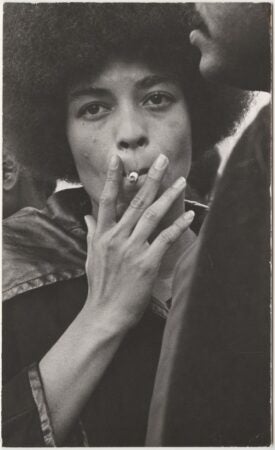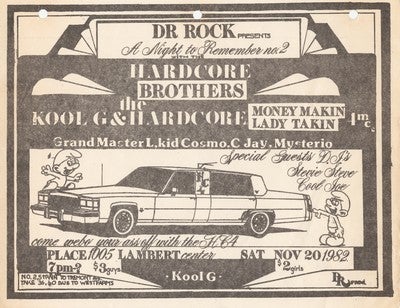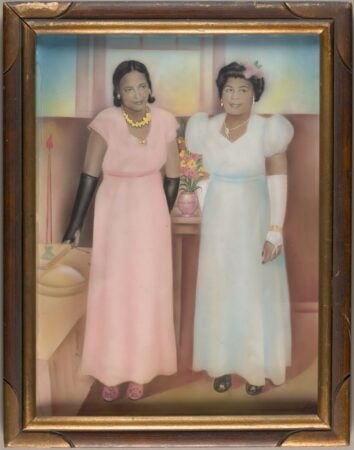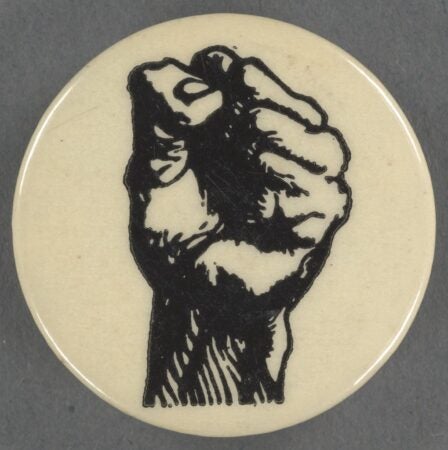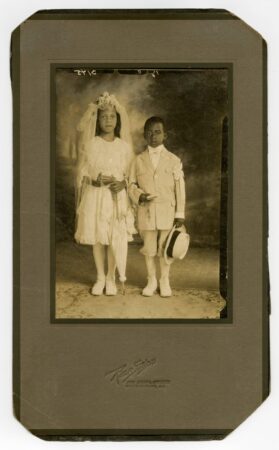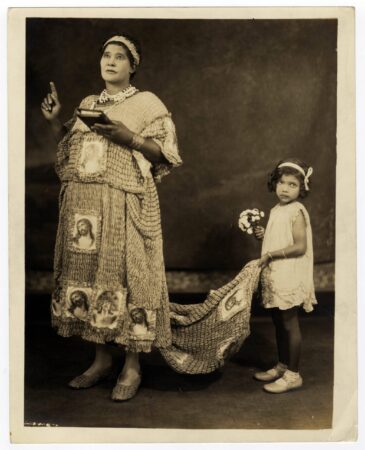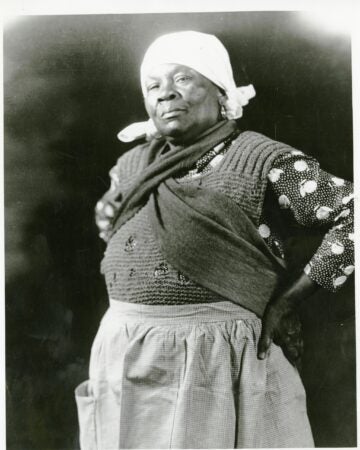Discover Black history with JSTOR collections
In honor of Black History Month, we have consolidated a list of collections available in JSTOR’s freely available community-contributed collections. We invite you to explore the resources – historic chronicles from manuscripts, newspapers, documents and recordings, the story of African American art told by the works themselves, photographic archives portraying the lives of celebrated African Americans and those we no longer know. Discover great works, official records, iconic portraits, ephemera and memorabilia in the collections below.
- Josephine Baker, 1930s-1940s. Image and data from Division of Rare and Manuscript Collections, Cornell University Library.
- Riley, Anthony. Ecstasy Garage Disco, Feb. 14, 1981. Image and data from Division of Rare and Manuscript Collections, Cornell University Library.
- Heliton, Bob. Angela Davis smoking, 1968. Image and data from Stephan Loewentheil Photograph Collection, #8043. Division of Rare and Manuscript Collections, Cornell University Library.
- Phase 2, Lonny Wood. Ecstasy Garage Disco, Nov. 27, 1980. Image and data from Division of Rare and Manuscript Collections, Cornell University Library.
- Lambert Center, Nov. 20, 1982. Image and data from Division of Rare and Manuscript Collections, Cornell University Library.
- Two women standing, early 20th century. Image and data from Division of Rare and Manuscript Collections, Cornell University Library.
- Bootsy Collins style star-shaped mirrored lens sunglasses. Schomburg Center for Research in Black Culture. Image and original data from the National Museum of African American History and Culture.
- Fist symbol, BU. X.566. Schomburg Center for Research in Black Culture. Image and original data from the New York Public Library.
Open collections
Freely accessible Creative Commons-licensed museum, library, and archive collections.
- Open Artstor: Schomburg Center for Research in Black Culture (New York Public Library) – 2,000+ images from the Schomburg Center, one of the world’s leading cultural institutions on the African American experience. Most focus on early community leaders and institutions in the United States: schools, churches, the military, and businesses. The works range from glimpses of Africa in the 1800s to 20th century protests.
- Open Artstor: Smithsonian National Museum of African American History & Culture – Close to 2500 images offering a broad interpretation of African American culture, presenting diverse histories including the enslavement of the people, protest and civil rights movements, and the lives of celebrated citizens and everyday people: art, artifacts, fashion, musical instruments, letters, portrait photographs books, broadsheets, political buttons and all types of ephemera.
- Woman with altered colored American flag. Ancestor tribute, August 2008. Image and data provided by Bob Gore Productions, Inc.
Artstor licensed collections
A wide range of subscription-based, multidisciplinary content from some of the world’s top museums, artists, libraries, scholars, and photo archives, including rare collections not accessible anywhere else, New contributions are added regularly.
- Amistad Research Center – Nearly 300 images from artists of the Harlem Renaissance.
- Bob Gore: Faith-based communities – Bob Gore documents expressions of faith in more than 300 photographs, mainly across African American communities and in the Caribbean.
- Eugene James Martin – Around 200 images of the paintings, collages and drawings of the artist’s (1938-2005) self-described “satirical” abstracts.
- Howardena Pindell – 20 images of the unconventional abstractions by the artist that address political and social issues.
- Image of the Black in Western Art – From the W. E. B. Du Bois Research Institute at the Hutchins Center for African and African American Research, Harvard University, the IBWA collection of more than 24,000 images provides a cross-section of western works of art of diverse types, origins and periods that feature depictions of Africans and African Americans.
- Mott-Warsh Collection – more than 300 images of the work of modern and contemporary African American artists.
- Romare Bearden Foundation – Nearly 800 images from the 20th century from the innovative collage artist (1911-1988).
- Wangechi Mutu – More than 100 images of the provocative collages of the Kenyan-born artist.
- First Communion Portrait. Image and data from Xavier University of Louisiana.
- Unidentified Spiritualist Female Leader and Child. Image and data from Xavier University of Louisiana.
- P.H. Polk. The Boss. Image and data from Tuskegee University.
- Bedou, Arthur P. Booker T. Washington on Horseback at Tuskegee University, Alabama, 1915. Image and data from Xavier University of Louisiana.
Shared Collections
Freely accessible primary source materials contributed by partner institutions at universities, libraries, museums, and organizations around the world.
- Abolitionist Papers (1855-1872) (Roger Williams University) – 14 images of correspondence related to civil rights leader George T. Downing (1819-1903), including letters of William Lloyd Garrison, Charles A. Sumner, and Ambrose E. Burnside.
- Civil Rights Movement Photographs (Queens College) – More than 325 photographs of Queens College students and other Northerners in the Civil Rights Movement, including Mississippi Freedom Summer, the Virginia Student Help Project, the Summer Community Organization and Political Education (SCOPE) Project, and the Medical Committee for Human Rights (MCHR).
- Cornell University
- Gail and Stephen Rudin Slavery Collection – More than 500 documents, letters, and other items on the devastating history of the sale, hire, purchase, and debt payment of slaves in eighteenth- and nineteenth-century America.
- Hip Hop Party and Event Flyers – With more than 500 party and event flyers ca. 1977-1984, this is the largest known institutional collection of these scarce materials, which have become increasingly valued for the details they provide about early Hip Hop culture.
- Loewentheil Collection of African-American Photographs – This collection stands to make a major impact on the study of African American visual culture in the nineteenth and twentieth centuries as it reveals volumes about black life and struggles in rare photographs.
- Eugene Sparrow Papers (Meadville Lombard Theological School) – Close to 50 images of papers of African American Unitarian minister and activist Eugene Sparrow – personal documents, correspondence, work documents, and sermons, dating from 1944-1978.
- Mahogany: The Newsletter of Chatham College’s Black Student Union, 1994 (Chatham University Archives) – Two issues of the university newsletter
- P. H. Polk Family Collection (Tuskegee University) – 100 photographs by P. H. Polk, official photographer of Tuskegee University who for more than four decades captured iconic images of life on the campus.
- Xavier University of Louisiana
- Archives Photographs Collection – Nearly 200 historic photographs from the XULA Archives of people of African descent in and around New Orleans, including notable citizens and institutions, local persons and events, and fraternal organizations and churches.
- Arthur P. Bedou Photographs Collection – Around 150 images from Arthur P. Bedou, leading black photographer from New Orleans during the first half of the twentieth century. Highlights include the final pictures of Marcus Garvey in the United States and documentation of Booker T. Washington’s last speaking tours.
- Basile Barès Collection – Images of items relating to African-American composer, and New Orleans Native, Basile Jean Barès (1845-1902), including sheet music, photographs, and correspondence.
- Charles F. Heartman Manuscripts of Slavery Collection – Nearly 6100 images of documents dating from 1724-1897, and relating directly to the social, economic, civil, and legal status of enslaved Negroes and Free People of Color in Louisiana, especially New Orleans. The manuscripts are written in French, Spanish, and English.
- The New Orleans Crusader Newspaper Collection (1889-1896) – Nearly 140 clippings from the Black Republican newspaper founded by politician, attorney, and journalist Louis André Martinet (1849-1917), and descendants of Free Persons of Color in New Orleans, in 1889. The newspaper served to inform the African American public on issues like racial injustice, inequality, and segregation. At the height of its popularity, during the 1890s, it was the only Black Daily Newspaper available in the United States.
- Oral History Collection – Around 20 documents from the interviews with members of the Xavier University of Louisiana Faculty, Staff, & Alumni, as well as associated Orders offering the perspective of those who lived during some of the most trying times in Southern history. This Collection serves as the permanent repository for the interviews of those who worked, lived, and sacrificed to build the University to its place as the oldest Historically Black Catholic University in the nation.
- Slavery & Freedom in Louisiana Collection – More than 165 images of manuscripts from slave records in Louisiana dating from 1784-1860. These rare documents, including freedom papers, wedding certificates, affidavits on runaway slaves, slave revolts, police records, and slave sale receipts, expand the historical knowledge of slavery in Louisiana and surrounding states. Documents are in French, Spanish, and English.


